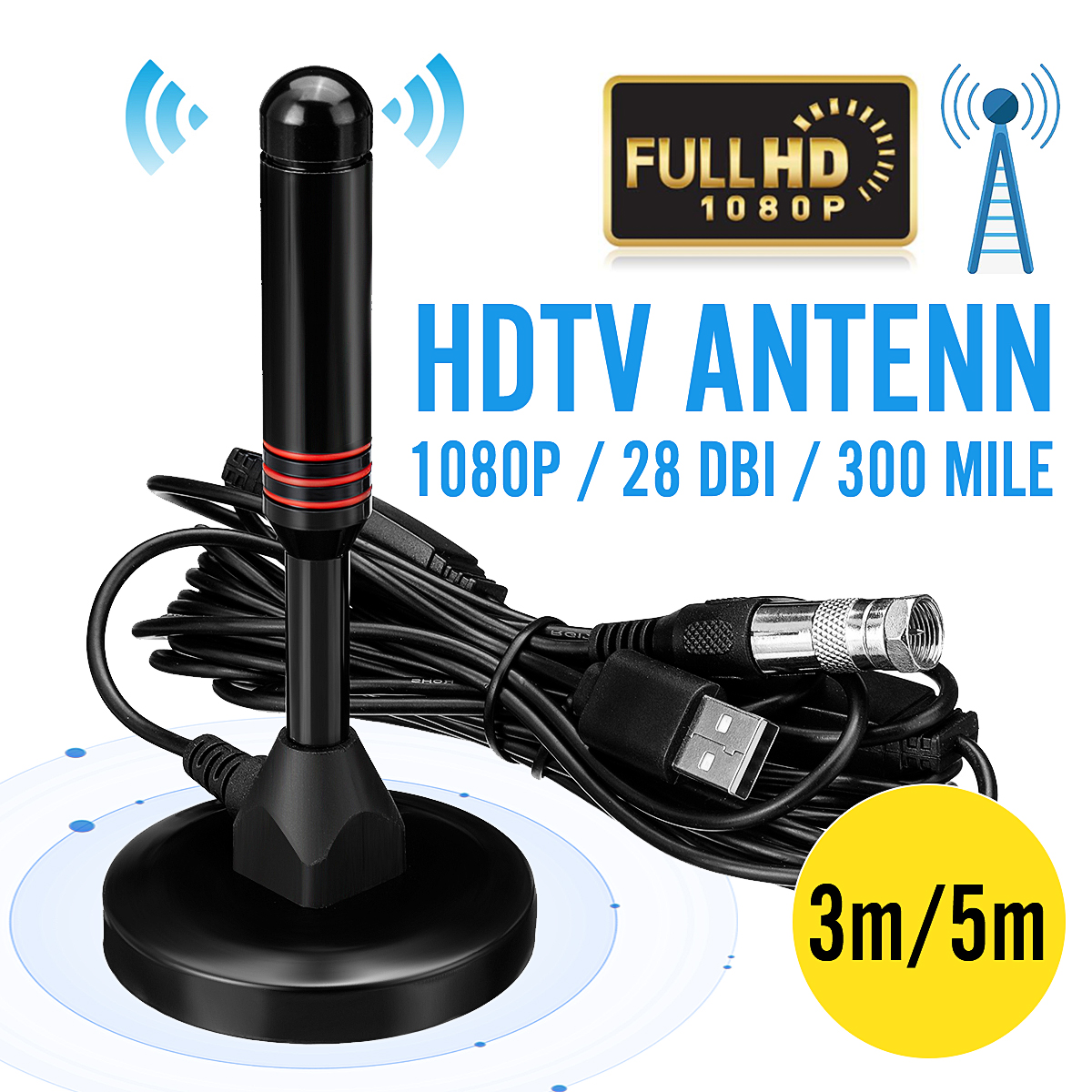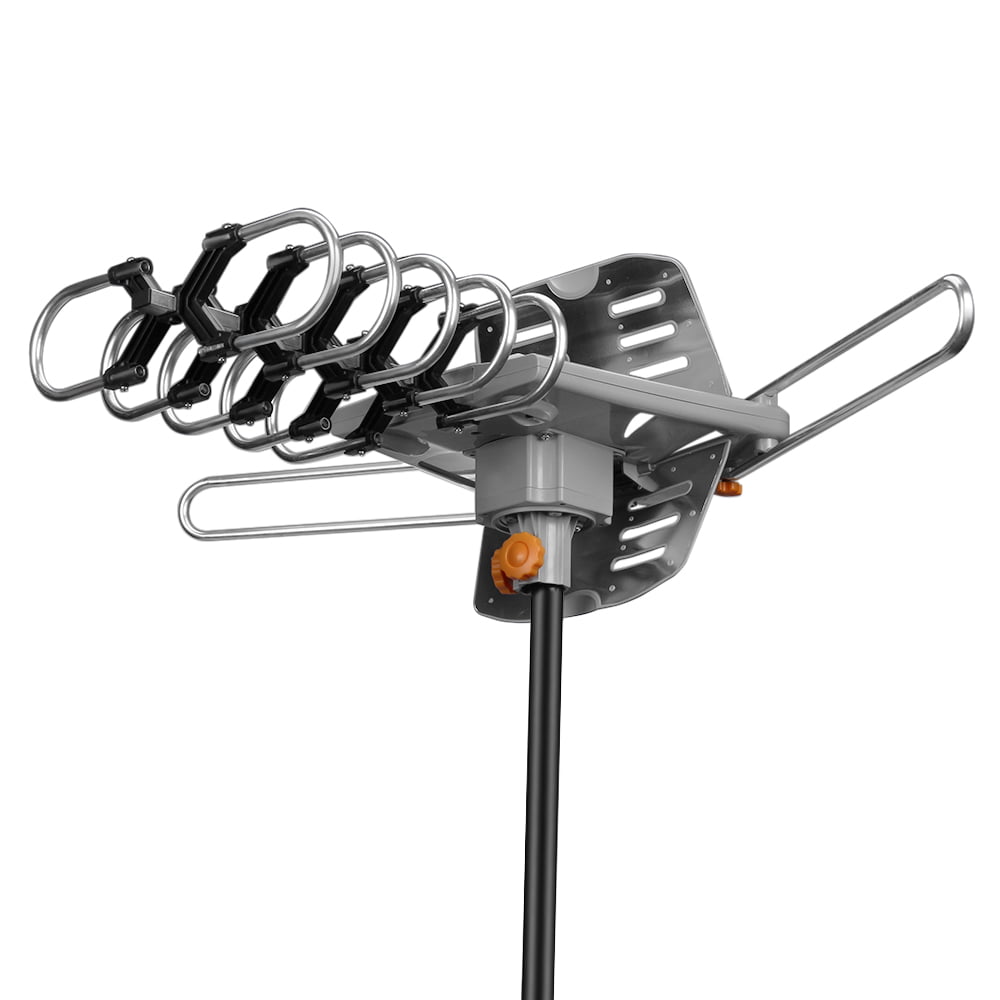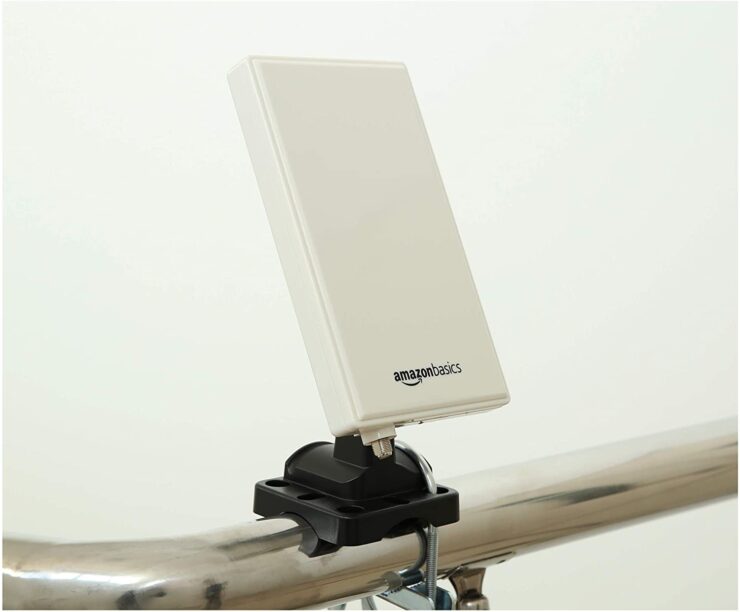

As noted above, a multidirectional antenna doesn’t need to be aimed, but it might not be as effective at picking up signals from distant towers. If you live in the suburbs of a big city, all the major broadcast towers may lie in the same direction, but you may need to reorient the antenna for different stations. Once you know where the towers are, you can point the antenna in that direction. You can also get useful advice and information, including tips on outdoor antennas, from AntennaWeb. You’ll also be able to determine how many stations you should be able to pull in and their relative signal strength. To find out where the local broadcast towers are in your area, go to the FCC’s DTV antenna map, then click on the station’s call letters to see where the signals are coming from. Some antennas are directional (these are also called “unidirectional” antennas), which means they need to be oriented toward a broadcast tower. Some flat models, such as the Winegard FL5500A FlatWave Amplified, are reversible, typically black on one side and white on the other.


Some of the newer flat antennas, such as the Mohu Leaf, can be painted (using a non-metallic paint), allowing them to blend in with the décor.

So try a few higher locations in the room, such as along the wall near the ceiling. In reality, most people will place the antenna in the same room as the TV. Of course, having the antenna in one room and the TV in another requires running a cable through your home because the antenna needs to be connected to the antenna (RF) input on your set. Sometimes objects in the room or roofing materials will interfere with the signals, so it pays to try a few different attic locations. If possible, place your indoor TV antenna in an attic or a second-story location, preferably by a window. It’s also why you probably won’t get good reception using an antenna placed in your basement. We’ve found that the height of your antenna is among the most critical factors in getting decent reception that’s one reason roof-mounted antennas typically outperform indoor models. To do that, you need to buy from a retailer that offers a no-hassle return policy and reasonable warranty. So here’s our advice: Try a few different antennas to see which one works best. One surprise was that we found little correlation between price and performance often cheaper antennas did as well as, or better than, more expensive models. Multidirectional antennas, which receive signals from all directions, might be better for urban locations, but they might not pull in the more distant stations a properly positioned directional antenna could. We conducted the tests at 10 homes spread across the New York City metropolitan area.Ī number of models are directional, so they need to be oriented toward broadcast towers. Some models worked better than others, but it was hard to predict which antenna would perform best in any particular location.
#No signal on tv antenna plus
In our latest tests of 19 top-selling indoor TV antennas, reception depended mainly on how far we were from broadcast towers, plus the terrain and details of our surroundings, such as houses, buildings, trees, and so on.


 0 kommentar(er)
0 kommentar(er)
